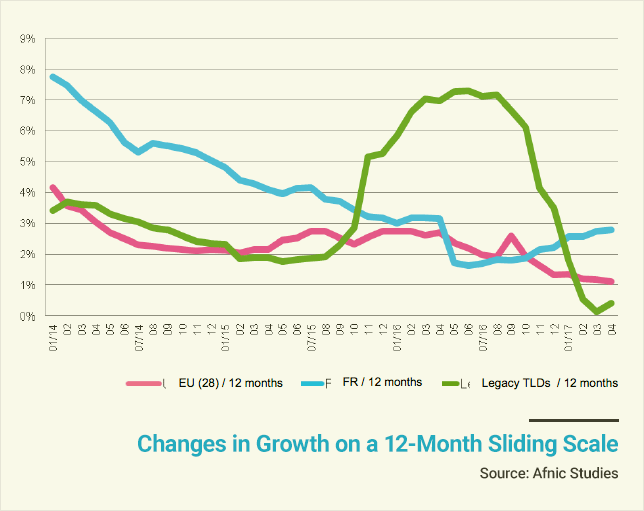

|
||

Afnic, the French Network Information Centre and manager of the .fr TLD, today published its report on the global domain market in 2016. The study is based on ICANN statistics, information from registries, specialized websites and its own research. “After boosting the performance of some TLDs in 2015, ‘Chinese domain name filings’ are now weighing on the growth of these same TLDs because of the numerous deletions. The build-up of the financial sphere in the capital of certain major players is resulting in ambitious strategies while subjecting the market to new frames of reference and changes in management teams.”
Highlight of some of the key points from the report:
— Overall market growth in 2016 was 7.1%, down from 11.7% in 2015.
— At the end of 2016, the global domain name market represented some 338 million domain names, including 169 million under Legacy TLDs (.COM, .NET, .ORG, etc.), 28 million under nTLDs created from 2014 onwards, and 141 million under ccTLDs (GeoTLDs).
— The situation of the “Legacy” TLDs varied quite considerably in 2016, some losing stock while others made marked progress. With its 131 million domain names and 39% market share, the .COM remained the market heavyweight but its positions are slowly being eroded, with a loss of 3 market share points since year-end 2014. Its growth has also considerably slowed down (from 6.4% to 3.7%).
— nTLDs continued to gain market share in terms of volume, accounting for 8% of the domain names registered worldwide at year-end 2016, compared with 4% at year-end 2015. This development in the use of nTLDs is encouraging, although its level is still low. The nTLD market can be broken down into segments - Community, Geo, Generic and Corp - with very different purposes and profiles, from the hundreds of .Corp that only hold a few names, to generic TLDs involved in a race for volume.
— Country code Top-Level Domains (ccTLDs) which had an excellent year in 2015, experienced zero growth in 2016. Africa and North America were the most dynamic regions in 2016, while Europe in comparison stagnated. Latin America is growing slowly but surely, and the Asia-Pacific region is subject to very strong variations both upwards and downwards. That region today is the one that determines the overall market trend.
Sponsored byCSC

Sponsored byRadix

Sponsored byWhoisXML API

Sponsored byVerisign

Sponsored byVerisign

Sponsored byIPv4.Global

Sponsored byDNIB.com
